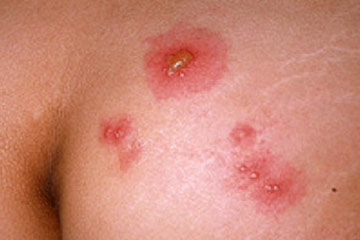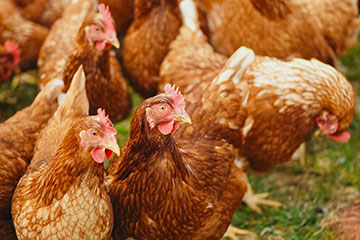Health Factors That Influence Fertility
Many different health issues can affect a woman's ability to get pregnant. Some of the more common problems are listed below and linked to additional information.
-
Many different health issues can affect a woman's ability to get pregnant. Some of the more common problems are listed below and linked to additional information.
Endometriosis
Endometriosis occurs when the cells that normally line the uterine cavity, called endometrium (pronounced en-doh-MEE-tree-uhm), grow outside the uterus instead.
Research has found a link between infertility and endometriosis. Studies show that between 25% and 50% of infertile woman have endometriosis and between 30% and 40% of women with endometriosis are infertile.1,2,3 Scientists do not know the exact cause of infertility in women with endometriosis.
Some current theories on how endometriosis causes infertility include the following 3:
- Changes in the structure of the female reproductive organs may occur and affect the release of the egg after ovulation or interrupt the egg's movement through the fallopian tube.
- The lining of the abdomen, which is called the peritoneum (pronounced per-i-tn-EE-uhm), may go through changes that affect its function:
- In women with endometriosis, the amount of fluid inside the peritoneum often increases.
- The fluid in the peritoneum contains substances that can negatively affect the functions of the egg, sperm, and fallopian tubes.
- Chemical changes in the lining of the uterus that occur as a result of endometriosis may affect an embryo's ability to implant properly and make it difficult for a woman to stay pregnant after conception
Polycystic Ovary Syndrome (PCOS)
PCOS is one of the most common causes of female infertility.4 It is a condition in which a woman's ovaries, and in some cases the adrenal glands, produce more androgens (a type of hormone) than normal. High levels of these hormones interfere with the development of ovarian follicles and release of eggs during ovulation. As a result, fluid-filled sacs, or cysts, can develop within the ovaries. A more detailed description can be found on the NICHD topic page for PCOS.
Researchers estimate that 5% to 10% of women in the United States have PCOS.4 The exact cause of PCOS is unknown, but current research suggests that a combination of genetic and environmental factors leads to the disease.
Primary Ovary Insufficiency (POI)
POI is a condition in which a woman's ovaries stop producing hormones and producing eggs at a young age. Women with POI do not ovulate regularly, or sometimes not at all, and may have abnormal levels of hormones due to problems with their ovaries.
Women with POI often have trouble getting pregnant. However, pregnancy is still possible. About 5% to 10% of women with POI get pregnant without medical treatment.5
Uterine Fibroids
Uterine fibroids are noncancerous tumors that form inside the uterus. Uterine fibroids can cause symptoms in some cases, depending on their size and location. Scientists do not know what causes fibroids to form, but it is believed that there may be a genetic basis.
Fibroids can contribute to infertility and are found in 5% to 10% of infertile women.6 Fibroids located in the uterine cavity (as opposed to those that grow within the uterine wall) or those that are larger than 6 centimeters in diameter are more likely to have a negative effect on fertility. Fibroids are more likely to affect a woman's fertility if they 6:
- Change the position of the cervix, which can reduce the number of sperm that enter the uterus
- Change the shape of the uterus, which can interfere with the movement of sperm or implantation
- Block the fallopian tubes, which prevents sperm from reaching the egg and keeps a fertilized egg from moving to the uterus
- Interfere with blood flow to the uterus, which can prevent the embryo from implanting.
General Causes of Infertility
General causes of infertility include:
Failure to Ovulate
The most common overall cause of infertility is the failure to ovulate, which occurs in 40% of women with infertility issues.7 Not ovulating can result from:
- Polycystic ovary syndrome (PCOS)
- Primary ovary insufficiency (POI)
- Aging
- Diminished ovarian reserve. This refers to a low number of eggs remaining in a woman's ovaries due to normal aging. This situation may result in hormone levels that can affect ovulation.
- Endocrine disorders. These disorders affect the hormones produced by the body. Abnormal hormone levels can disrupt ovulation. Some endocrine disorders known to affect ovulation are7:
- Hypothalamic (pronounced hahy-puh-thuh-LAM-ik) amenorrhea (pronounced uh-men-uh-REE-uh), in which a structure in the brain called the hypothalamus produces abnormal levels of hormones
- Hyperprolactinemia (pronounced hahy-purr-pro-lak-ti-NEE-mee-uh), in which levels of the hormone prolactin are too high
- Thyroid disease, which affects the levels of hormones released by the thyroid, a gland in the neck
- Adrenal disease, which affects the levels of hormones released by the adrenal glands that sit on top of each kidney
- Tobacco use. Smoking or other use of tobacco can also affect ovulation and can cause complications with pregnancy. For more information on the effects of tobacco use on pregnancy go to the Centers for Disease Control and Prevention (CDC) website on pregnancy and smoking.
Structural Problems of the Reproductive System
Structural problems usually involve the presence of abnormal tissue in the fallopian tubes or uterus.
If the fallopian tubes are blocked, eggs are not able to move from the ovaries to the uterus and sperm is not able to reach the egg for fertilization. Blockage of the fallopian tubes can be associated with:
- Endometriosis
- Uterine fibroids
- Pelvic inflammatory disease, an infection of the female reproductive structures that is often caused by bacteria resulting from a common sexually transmitted infection (STI), such as gonorrhea or chlamydia 8
- Tubal ligation, a surgical procedure that closes a woman's fallopian tubes permanently.9
In addition, some women are born with blockages in their fallopian tubes.
Structural problems with the uterus that may lead to infertility include:
- Uterine fibroids, which are growths that appear within and around the wall of the uterus. Most women with fibroids do not have problems with fertility and can get pregnant. However, some women with fibroids may not be able to get pregnant naturally or may have multiple miscarriages or preterm labor.
- Polyps, which are noncancerous growths on the inside surface of the uterus. Polyps can interfere with the function of the uterus and make it difficult for a woman to remain pregnant after conception. Surgical removal of the polyps can increase the chances for a woman to get pregnant.
- Scarring in the uterus from previous injuries or surgery. Scarring may increase the risk of miscarriage and infertility.
- An unusually shaped uterus, which can affect a woman's ability to remain pregnant after conception.
Infections
Infections can also cause infertility. Chlamydia is one of the most common sexually transmitted infections that affect female fertility. More information on chlamydia can be found on the sexually transmitted infection (STI) Health Topic page.
Chronic infections in the cervix can also reduce the amount or quality of cervical mucus, the sticky or slippery substance that collects on the cervix and in the vagina. Reduced amount or quality of cervical mucus can make it difficult for women to get pregnant.10
- American Society for Reproductive Medicine. (2012). Quick facts about infertility. Retrieved June 11, 2012, from http://www.asrm.org/detail.aspx?id=2322 [top]
- NICHD. (2002). Endometriosis. Retrieved June 11, 2012. [top]
- Practice Committee of the American Society for Reproductive Medicine. (2006). Endometriosis and infertility. Fertility and Sterility, 86(5 Suppl 1), S156–S160. [top]
- NICHD. (2008). Beyond infertility: Polycystic ovary syndrome (PCOS). Retrieved June 11, 2012. [top]
- NICHD. (2003). Do I have premature ovarian failure? Retrieved June 11, 2012. [top]
- American Society for Reproductive Medicine. (2012). Fibroids and fertility. Retrieved June 11, 2012, fromhttp://www.reproductivefacts.org/uploadedFiles/ASRM_Content/Resources/Patient_Resources/Fact_Sheets_and_Info
_Booklets/Fibroids%20and%20fertility_final_1-5-12.pdf (PDF - 235 KB) [top] - Jose-Miller, A. B., Boyden, J. W., & Frey, K. A. (2007). Infertility. American Family Physician, 75, 849–856. [top]
- U.S. Department of Health and Human Services' Office on Women's Health. (2010, May 18). Pelvic inflammatory disease fact sheet. Retrieved July 19, 2012, fromhttp://www.womenshealth.gov/publications/our-publications/fact-sheet/pelvic-inflammatory-disease.cfm#a [top]
- NIH MedLine Plus. (2010, February 26). Tubal ligation. Retrieved July 19, 2012, fromhttp://www.nlm.nih.gov/medlineplus/ency/article/002913.htm [top]
- Jose-Miller, A. B., Boyden, J. W., & Frey, K. A. (2007). Infertility. American Family Physician, 75, 849–856. [top]
Source
Health Factors That Influence Fertility
Eunice Kennedy Shriver National Institute of
Child Health and Human Development (NICHD)
GeoSalud, August 11, 2013






